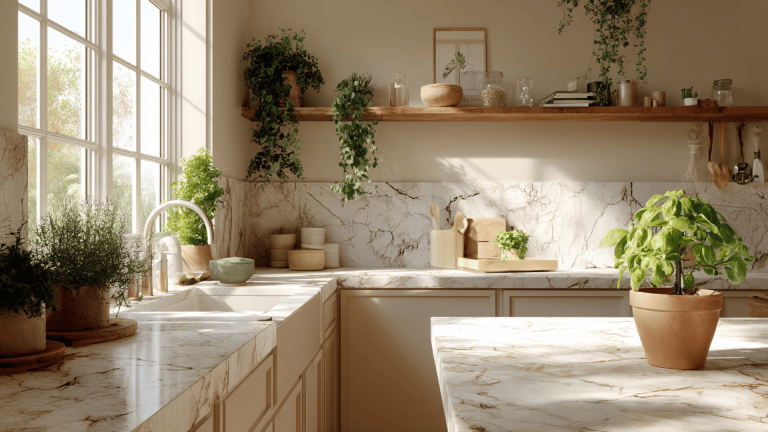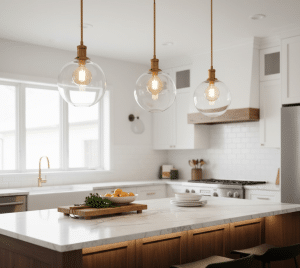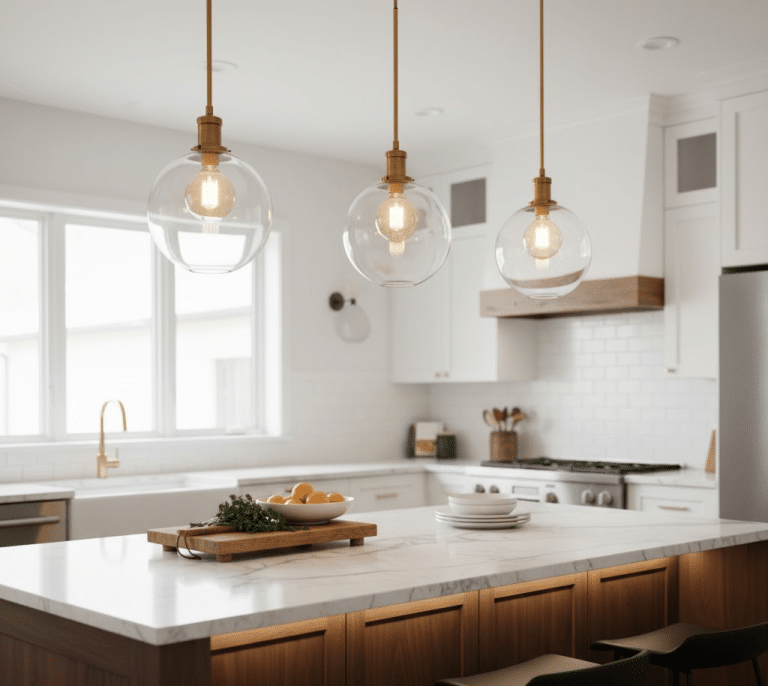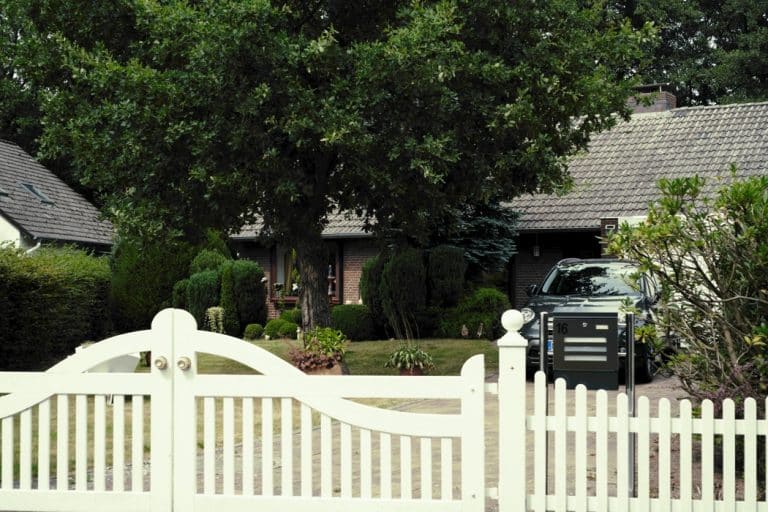Marble kitchens always catch my eye, but I know how figuring out how to make one work at home can feel a bit overwhelming. You might be asking where to start, what kind of marble to choose, or how to keep it looking good once it’s in.
That’s exactly why I put this guide together. We’ll walk through design ideas, the pros and cons of using marble, what it might cost, how to care for it, and where to find the best options.
By the end, you’ll have a clear path to bringing that classic marble look into your kitchen, without second-guessing every step. Let’s find out if marble’s the right fit for your space.
Finding Your Style Before You Choose
Before you start picking marble slabs or browsing backsplash ideas, take a minute to picture how you want your kitchen to feel.
Do you like bold and modern, or do you lean toward something softer and more classic? Are you after a bright, open space or something warm and grounded? Getting a sense of the mood you’re going for makes it easier to choose the right marble, colors, and finishes later on.
You don’t need to have it all figured out right now. But having a general direction helps everything come together more naturally.
Once you’ve got a feel for your style, we can get into how marble can fit into your kitchen. Let’s see what’s possible.
Types of Marble for Kitchens
Not all marble looks or feels the same. Some have soft, quiet veining. Others are bold and full of drama. Let’s look at the most common types you’ll see in kitchens and how they compare.
Comparing Calacatta, Carrara, and Arabescato

These three are often confused, but they each bring a different feel to your space.
- Calacatta: Thick, bold gray veining on a bright white background. It’s rare and high-end, which means it’s also more expensive. Calacatta makes a big visual statement, especially on islands or full backsplashes.
- Carrara: Softer gray tones with thinner, more subtle veins. This is the most common marble in kitchens and the most budget-friendly. It gives a clean, classic look without taking over the space.
- Arabescato: Looks like a mix between the two. It has stronger patterning than Carrara but softer than Calacatta. You’ll see lots of movement and swirls in the stone, which makes it feel more artistic.
All of these work well for countertops, but Calacatta and Arabescato are often saved for spots where you want a real showpiece.
Exotic Options
If you’re looking for something a little different, a few lesser-known marble types can really make your kitchen stand out.
Here are some interesting ones to check out:
- Danby marble: mined in Vermont, has a warm white tone with soft gold or gray veining
- Blue Onyx: eye-catching swirls of blue, white, and cream are better for decor or accent walls
- Emperador marble: deep brown with white veins, good for darker kitchen themes
- Statuario: similar to Calacatta but with more contrast and crisper lines
These options are usually harder to find and cost more, but they add a unique character you won’t see in every home.
I’ve seen folks use them in small spots, like open shelves, side panels, or even drawer fronts, just to bring in a subtle, standout detail.
Marble Kitchen Design Ideas
Marble isn’t just for one part of the kitchen. You’ll see it used in everything from countertops to floors. Here’s how you can bring it into different parts of your space:
Marble Kitchen Countertops
If you’re drawn to the look of marble, countertops are usually the first place to start.
You’ll see:
- Calacatta marble: bold, dramatic veining that makes a big statement
- Carrara marble: soft gray veins, more subtle and budget-friendly
- Arabescato: thicker, wavy lines that give a more artistic vibe
- Danby marble: white base with soft gray and gold veins, often sourced in the U.S.
Some folks go for a full slab with waterfall edges to get that sleek, modern look. Others prefer a matte (honed) finish, which does a better job of hiding etches and scratches.
No matter which route you take, marble gives the whole space an instant upgrade. It’s clean, bright, and classic.
Marble Backsplashes
Marble backsplashes add texture and detail to your kitchen while keeping the look clean and understated.
Here are some popular options:
- Subway-style marble tiles: classic and simple
- Herringbone patterns: add movement and visual interest
- Full slab backsplashes: match your countertops for a seamless look
- Veined marble mosaics: smaller pieces arranged in cool patterns
If you want to show off the natural veining, a bookmatched slab is the way to go. It mirrors the pattern on both sides and gives a high-end, custom look.
Backsplashes are also a smart way to bring in marble without going all-in on the counters.
Islands
Marble islands can be stylish and practical at the same time; it all comes down to how you use them.
Here’s how people are styling them:
- Large islands with thick marble slabs: perfect for big kitchens and entertaining
- Compact islands: great for small spaces, just enough to prep or serve
- Two-tone islands: marble on top, wood or colored cabinetry underneath
- Waterfall edges: the marble runs down the sides for a smooth, continuous look
Some homeowners add bar seating to turn the island into a spot for casual meals or chats.
If you’re not planning to use marble everywhere, adding it just to the island is a great way to mix things up.
Floors and Walls
Marble floors and wall panels aren’t for everyone, but they definitely make a bold statement.
Here’s what to know:
- Polished marble tiles: shiny and reflective, but can be slippery
- Honed marble tiles: softer finish, better grip, easier to maintain
- Accent walls: behind the stove or sink for a luxury touch
- Marble-look porcelain: cheaper, more durable, and easier to clean
Marble floors look great, but they’re not the best fit for busy homes unless you’re up for regular upkeep. That said, they can make a smaller kitchen feel more open and upscale.
How to Style Plants in a Marble Kitchen
Marble kitchens can lean a bit cold or formal, but that’s where plants really help. They bring in warmth, texture, and a natural feel that makes the space feel lived-in instead of just styled.
Best Spots to Place Plants
Look at where you’ve got natural light and a little extra room. A sunny windowsill is perfect for herbs. Open shelves work well for small potted plants like pothos or philodendron.
Even a marble island feels more inviting with a tall planter or a simple cluster of greenery right in the center.
Plants That Pair Well with Marble
Soft greens pop nicely against bright white marble, while bold leaves pair well with warmer tones. Try snakeplants, trailing ivy, or even a sprig of eucalyptus.
If your marble has strong veining, stick with clean, simple-leafed plants that won’t compete with the pattern.
Make It Functional with Herbs
If you enjoy cooking, growing herbs in the kitchen is a great touch. Basil, rosemary, thyme, and mint all do well in bright spots.
I like using clay or white ceramic pots; they keep things simple and don’t compete with the marble.
Choose the Right Containers
Marble has a refined look, so it pairs best with simple, natural pots. Matte white, terracotta, or stoneplanters work nicely.
Steer clear of anything too colorful or glossy, as it can take away from the marble’s natural beauty.
Keep It Low-Maintenance
Go for plants that don’t need a lot of fuss. Kitchens get hot, busy, and a little messy, so it helps to choose greenery that can handle the ups and downs. I’ve found pothos and snake plants are great for that.
Bringing plants into a marble kitchen isn’t just for looks. It makes the space feel more grounded and personal. A little green goes a long way in softening all that stone.
Pros and Cons of Marble in Kitchens
Marble can make a kitchen look amazing, but it’s not without its downsides. I’ve used it in a few homes and seen both the charm and the challenges. Here’s what to keep in mind before you decide:
| Pros | Cons |
|---|---|
| Classic style: Elegant and never really goes out of fashion | Stains easily: Oil, wine, and sauces can soak in if it’s not sealed |
| Unique patterns: No two slabs look the same | Scratches and etches: Knives and acids (like lemon juice) can damage the surface |
| Brightens the room: Light marble makes your kitchen feel more open | Needs maintenance: Sealing once a year (or more) is a must |
| Versatile look: Works with modern, classic, and farmhouse styles | Not heat-safe: Hot pans can cause marks or cracks |
| Adds value: Seen as a luxury by homebuyers | Expensive: Both the stone and installation cost more than many alternatives |
If you’re going with marble, you’ll need to be okay with some wear and tear over time. In my experience, the folks who truly love it see those marks as “character,” not flaws.
Cost of Marble Kitchen Upgrades
Marble isn’t the most budget-friendly option, but for a lot of people, the beauty makes it worth it. Still, it’s good to know what you’re signing up for before you start shopping.
By Feature (Countertops, Island, etc.)
Costs can swing quite a bit depending on the marble you choose, your kitchen’s size, and the installer you hire. Here’s a quick breakdown of what you might expect:
| Feature | Estimated Cost Range |
|---|---|
| Marble Countertops | $60–$150 per sq. ft. (installed) |
| Marble Backsplash | $25–$70 per sq. ft. |
| Marble Kitchen Island | $2,000–$10,000+ (depending on size and slab quality) |
| Marble Flooring | $10–$50 per sq. ft. (material only) |
| Marble Accent Wall | $1,000–$4,000+ (full slab or tile installation) |
Keep in mind, prices can climb fast if you go with rare marble or add custom touches like waterfall edges or bookmatched slabs.
Labor costs can rise, too. Many installers charge more for marble since it’s heavy, delicate, and takes extra care to handle.
Budget-Friendly Alternatives to Marble
If you love the look of marble but want to save some money or skip the upkeep, there are some solid alternatives worth considering.
Here are a few worth considering:
- Marble-look quartz: Easier to care for, more durable, still very pretty
- Porcelain slabs: Mimics marble patterns, great for walls and floors
- Laminate countertops: Newer styles have realistic marble patterns at a fraction of the cost
- Butcher block + marble combo: Use marble only in key areas, like an island or baking zone
These options can give you that same clean, classic feel without the higher price or upkeep.
Marble’s definitely an investment, but there are ways to keep the cost in check. It all comes down to what matters most, full luxury or a smart blend of looks and function.
Marble Installation and Fabrication
Once you’ve chosen your marble, the next big step is installation. This part’s just as important as the material itself.
When it’s done right, it looks great and holds up over time. Done wrong, and you could end up with cracks, stains, or uneven seams.
DIY vs. Professional
You might be thinking about installing marble yourself. Honestly, it’s a tough job. Marble is heavy, fragile, and costly to replace if something goes wrong. I’ve seen a few folks give it a shot, but most ended up calling a pro to fix it later.
If you’re not used to working with stone, it’s usually better to hire a pro. You’ll pay more upfront, but you get cleaner cuts, stronger support, and proper sealing. Plus, many installers offer a warranty if problems show up down the road.
Still, if you’re handy and confident, you could try a smaller project like a marble backsplash or a small counter section. Just keep in mind, marble mistakes are tough to cover up.
Working with Installers
Even if you bring in a pro, it’s still worth staying involved. Not every installer treats marble the same way, so it’s smart to ask a few questions upfront.
Find out how they plan to seal the marble and what products they’ll use. Ask how often it’ll need resealing. Make sure they know how to cut for your sink or stove, and check how they’ll support any overhangs, especially if you’re going with a waterfall island.
Also, ask how long the job will take and whether they handle cleanup. I always suggest getting everything in writing, just to be safe.
When marbles are installed the right way, it really shows. Taking a little time at the start can save a lot of stress down the line.
Care and Maintenance Tips
Marble looks great, but it takes a little effort to keep it that way. Once you know the routine, the upkeep just becomes part of daily kitchen care.
- Daily cleaning routine: Wipe down with a soft cloth and mild dish soap or a marble-safe cleaner. Skip anything acidic, like vinegar or lemon, as it can leave dull spots or damage the surface.
- Sealing the surface: Marble needs to be sealed once or twice a year. If water stops beading up, that’s your cue to reseal.
- Protecting from spills: Blot up spills fast, especially wine, oil, coffee, or tomato sauce. Then dry the spot to keep water marks and etching away.
- Cutting and prep tips: Always use a cutting board. Marble scratches easily, and cutting right on it isn’t great for your knives either.
- Heat protection: Don’t put hot pans or pots directly on marble. Use trivets or heat pads to avoid cracking or heat stains.
- Handling stains and etching: Use marble-specific cleaners or polish if things go wrong. For bigger damage, a pro can restore the surface.
Taking care of marble isn’t tough; it just takes a few consistent habits. Keep up with the basics, and your kitchen will look great for years to come.
Where to Buy Marble Kitchen Features
You’ve got a few solid options when it comes to shopping for marble kitchen pieces, depending on your budget and how custom you want to get.
Big-box stores like Lowe’s and Home Depot carry marble tiles, prefab countertops, and marble-look quartz. They’re a good fit if you want something budget-friendly and easy to install.
Online retailers like Wayfair, IKEA, and even eBay offer kitchen islands, backsplashes, and smaller decor items. Just make sure to read the reviews and check return policies before you click “buy.”
If you’re after something specific or want a full slab, visit a local stone yard or fabricator. You can see the stone in person, pick out what you like, and often get help with cutting and installation.
For rare styles or higher-end finishes, check out premium showrooms. And if you’re open to secondhand, try salvage yards; you might come across a great find at a lower cost.
Where you shop really depends on your project goals and what matters most to you.
Wrapping Up
If you’ve been thinking about adding marble to your kitchen, this guide should give you a solid place to start. Now you’ve got a clear sense of what works, what to look out for, and where to begin.
Think about what fits your space and your daily routine. Whether you go all in or just add a small marble kitchen feature, you can make it work in a way that feels right for you.
I’ve seen firsthand that a little care goes a long way. When you treat marble right, it holds up beautifully over time.
Ready for more ideas? Check out my other blogs and start reimagining what your home could look like.




















